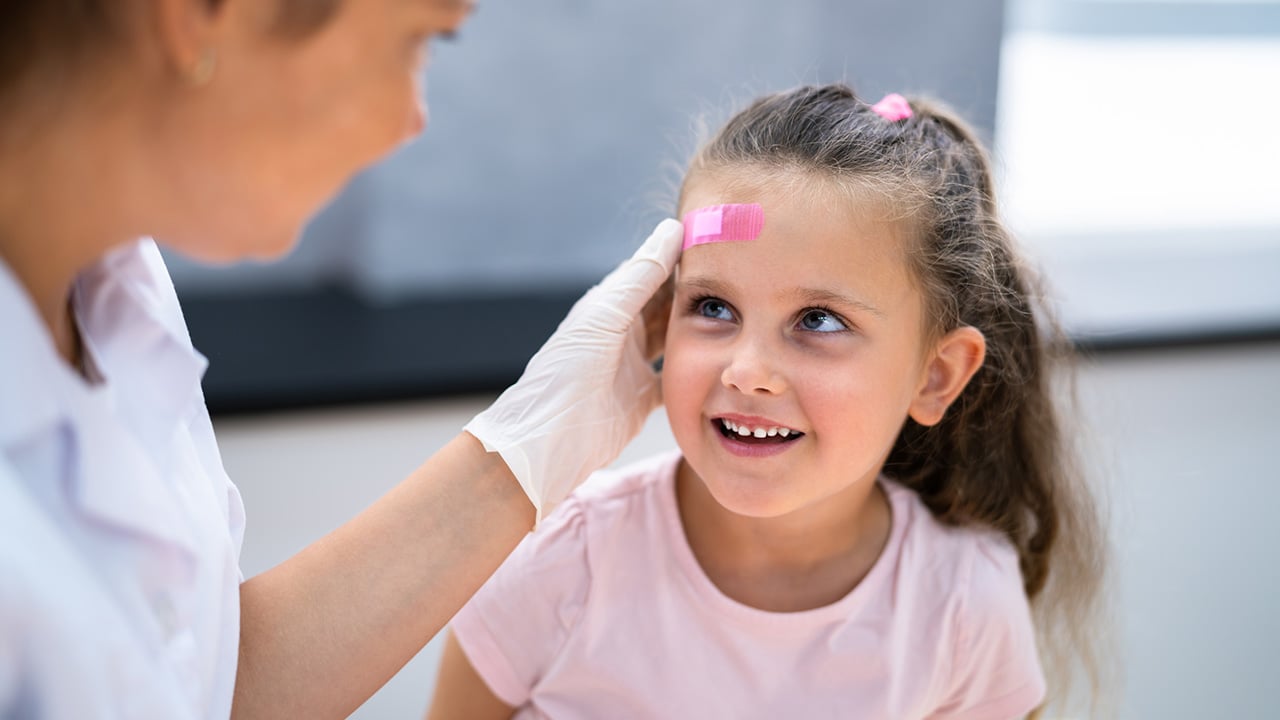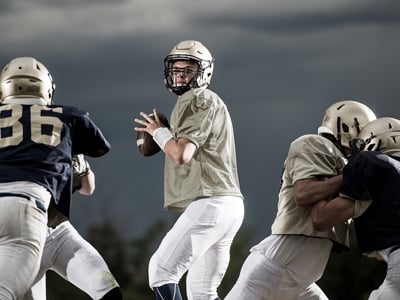- Doctors & Departments
-
Conditions & Advice
- Overview
- Conditions and Symptoms
- Symptom Checker
- Parent Resources
- The Connection Journey
- Calm A Crying Baby
- Sports Articles
- Dosage Tables
- Baby Guide
-
Your Visit
- Overview
- Prepare for Your Visit
- Your Overnight Stay
- Send a Cheer Card
- Family and Patient Resources
- Patient Cost Estimate
- Insurance and Financial Resources
- Online Bill Pay
- Medical Records
- Policies and Procedures
- We Ask Because We Care
Click to find the locations nearest youFind locations by region
See all locations -
Community
- Overview
- Addressing the Youth Mental Health Crisis
- Calendar of Events
- Child Health Advocacy
- Community Health
- Community Partners
- Corporate Relations
- Global Health
- Patient Advocacy
- Patient Stories
- Pediatric Affiliations
- Support Children’s Colorado
- Specialty Outreach Clinics
Your Support Matters
Upcoming Events
Colorado Hospitals Substance Exposed Newborn Quality Improvement Collaborative CHoSEN Conference (Hybrid)
Monday, April 29, 2024The CHoSEN Collaborative is an effort to increase consistency in...
-
Research & Innovation
- Overview
- Pediatric Clinical Trials
- Q: Pediatric Health Advances
- Discoveries and Milestones
- Training and Internships
- Academic Affiliation
- Investigator Resources
- Funding Opportunities
- Center For Innovation
- Support Our Research
- Research Areas

It starts with a Q:
For the latest cutting-edge research, innovative collaborations and remarkable discoveries in child health, read stories from across all our areas of study in Q: Advances and Answers in Pediatric Health.


Everything Parents Should Know About Pediatric Head Injuries

There are few things more worrying to parents than when a child sustains a head injury. Yet these injuries seem somewhat like a childhood rite of passage. Whether it’s a toddler bumping their head while learning to walk, an elementary schooler falling off their bike or a teenager getting knocked down during a sports game, most, if not all, kids will experience a pediatric head injury at some point.
While many head injuries in kids are not serious and do not require emergency medical treatment, the likelihood that a child experiences a significant head injury increases as they get older. According to data reported by the Centers for Disease Control and Prevention (CDC), in 2020, 6.8% of all children reported symptoms of a concussion or brain injury at some point in their lifetime. Breaking it down by age, only 2% of children under age 5 reported symptoms of a concussion or brain injury. That percentage increased to 5.8% for children 6 to 11 and 12.2% for 12- to 17-year-olds.
“Head injuries can be scary, especially when a child does something unusual after they hit their head,” says Julie Wilson, MD, pediatric sports medicine physician and co-director of the Concussion Program at Children’s Hospital Colorado. “When you hit your head, sometimes you do weird things because of the response that your body has: the stress, the shock, the pain. And sometimes you do weird things because there's a more significant injury to the brain — it's bleeding, it's swelling, there’s a fracture. And it can be hard to know what is happening that moment.”
To help guide parents and caregivers through this tricky topic, we asked Dr. Wilson to provide an overview of common pediatric head injuries, concerning signs and symptoms to look out for, prevention tips and when and where to seek care.
Common head injuries in kids
Head injuries in kids can be wide-ranging in both severity and scope. Generally, pediatric head injuries encompass any injuries that occur to the scalp, skull and brain. This includes minor injuries, such as bumps or goose eggs, superficial scratches or cuts and bruising on the surface (otherwise known as contusions), as well as more serious injuries, such as cuts that won’t stop bleeding, facial or skull fractures and traumatic brain injuries (TBIs), including concussions.
Bumps on the head
Every child will get a bump on their head at some point. For infants and toddlers under the age of 2, any scalp hematoma or bump on the head should be evaluated since their skulls are still soft. But for kids over age 2, consider the location of the injury before deciding whether or not to seek care.
“Generally, the forehead is pretty resilient for children ages 2 and older,” Dr. Wilson says, noting that forehead bumps are quite common, especially for toddlers and younger children. “But other parts — our temples, behind our ears, the nose, cheekbones — are a bit more fragile.”
When a child bumps their head, it’s likely that the goose egg will appear quickly. If you put some ice or a cold washcloth on it, usually the bump will start to go down. In this case, if the child is acting normal, it’s OK to call your pediatrician or healthcare provider for advice and monitor the child at home.
However, if the bump gets bigger over time or new swelling or bruising appears around the face, behind the ears or under the eyes, this could be a sign of something more serious. In these cases, Dr. Wilson recommends seeking out medical care.
For babies and toddlers, make sure to monitor their soft spots, or fontanelles, after any bumps or falls. A bulging fontanelle when a baby is not crying or lying down may indicate a more serious medical issue, such as bleeding or pressure in the brain that could result from a fall. Additionally, if your baby or toddler is crying uncontrollably, vomiting repeatedly, can’t stay alert or has fluid or blood draining from their ears or nose, seek emergency care.
Cuts on the head or scalp
The rule of thumb for a cut on the head or scalp is pretty simple: If you can control the bleeding and clean the wound thoroughly, then you might be able to manage the cut at home. But if a child gets a deep cut on their head that won’t stop bleeding or if they cut themselves on something that is dirty — for example, a rock or piece of metal — then it’s a good idea to seek medical attention to get it thoroughly cleaned and evaluate possible interventions, whether that’s glue, staples or stitches. In some cases, a child might need an updated tetanus shot, as well.
Facial or skull fractures
Facial and skull fractures often occur with trauma — such as when a kid or teenager gets struck in the face by a baseball or lacrosse ball or falls off their bike and hits their head. If the injury occurs to the forehead, which is relatively strong, the child might not need immediate medical attention, but any injuries that occur at eye level or below should be evaluated right away.
Swelling or bruising around the face, accompanied by pain, loss of vision or hearing, difficulty opening the mouth or breathing through the nose warrants a trip to the ER. From there, patients can receive the appropriate imaging and be referred to additional care, such as an ophthalmologist (eye doctor), otolaryngologist (ear, nose and throat doctor), plastic surgeon or any other expert.
Traumatic brain injuries
Traumatic brain injuries (TBIs) are different from other head injuries, as they occur in the brain, within the skull. According to the CDC, children have the highest rate of emergency department visits for TBIs of all age groups. Falls or being struck by or against an object are common causes of TBIs in children ages 14 or under. In kids over 15, falls and motor vehicle accidents account for the most TBIs.
Brain injuries can be categorized in three ways:
- Mild traumatic brain injury (including concussions)
- Moderate traumatic brain injury
- Severe traumatic brain injury
With moderate to severe TBIs, patients have a sustained loss of consciousness, and structural injury is noted on imaging, such as a CT scan or MRI. These injuries may also include bleeding or swelling in the brain. Sometimes, an individual who experiences a moderate to severe TBI can also have seizures due to the injury to the brain.
Moderate to severe TBIs can have a lasting impact on a child’s health. According to the CDC, brain injuries can disrupt a child’s development and cause them to experience changes in their health, thinking and behavior. TBIs can also impact learning, self-regulation and social and sports participation. It’s crucial for parents and caregivers to work with their healthcare providers to treat and monitor a child who has experienced a TBI to help minimize the impact on their future health and prosperity.
Concussions
Concussions are a form of mild TBI. A concussion is caused by a significant blow or jolt to the head or neck that temporarily disrupts the way the brain functions but does not structurally damage the brain. These injuries are common in children and adolescents who play sports such as football, hockey or wrestling. In fact, according to a report published by the National Institute of Health, 1.6 to 3.8 million sports- and recreation-related brain injuries may occur every year in the U.S. And this number might be low, as many injuries are never recognized or treated.
Read more concussion facts for families of young athletes.
Symptoms of a concussion
The signs and symptoms of a concussion can vary and impact a child’s physical, cognitive and emotional state. Here are some symptoms to watch out for:
- Headaches
- Sick to stomach or vomiting
- Dizziness or balance problems
- Low energy or feeling run down
- Trouble with vision
- Bothered by light or noise
- Sleeping problems
- Slowed thinking, confusion or feeling “foggy”
- Irritability or changes in behavior
Rarely after a head injury, a seizure or tonic posturing — sudden and brief stiffness or tension in a person’s arms, legs or body — can occur. This situation should prompt immediate medical attention, and typically advanced imaging (CT or MRI) is needed to evaluate for bleeding or swelling of the brain in this situation.
What to do if you think your child has a concussion
The medical response to a concussion depends on the severity of symptoms and whether or not immediate medical attention is available, Dr. Wilson explains. For example, if an athlete is injured during a game and can be evaluated by an athletic trainer or team physician, their parent or caregiver might receive care instructions, and the child could be monitored at home.
If the symptoms are severe or worsen over time, it makes sense to take a child to urgent care or the ER. The doctor should take a thorough account of what happened and evaluate their symptoms. While a concussion can be diagnosed without the need for advanced imaging (CT or MRI), if there are concerning signs of symptoms on evaluation, these tests may be ordered to rule out something more serious, like a moderate or severe TBI.
Dr. Wilson notes that concussion symptoms start immediately or shortly after a head or neck injury. When diagnosing a concussion, she looks for three things:
- An injury to the head or neck, or even a force to the body that can jostle the head
- Concussion symptoms
- A timeframe that makes sense
"So, if it's a week after the injury that symptoms start, that's not a concussion and we need to consider other possible causes,” Dr. Wilson says. “Symptoms should start soon after injury, usually right away, sometimes within a couple of minutes.”
In cases where symptoms are delayed, it’s likely because something else was distracting the child in the moment, whether it’s adrenaline from their sports game or a serious injury to another part of the body, such as a broken leg or arm. In this case, serial evaluation of the child can be helpful to detect symptoms of concussion once the distracting injury has been addressed.
Treatment for concussions
The first thing to do for any child with a concussion is to keep them safe and monitor their symptoms. If they’re an athlete who’s injured during a game, they should immediately be removed from play and monitored for red flags.
Concussion symptoms are usually the worst in the first few days, during which parents should keep them comfortable and encourage relative rest. This includes limiting screen time, not exercising or performing intense mental work, typically for the first 24-48 hours. Over-the-counter painkillers like ibuprofen or acetaminophen can also help ease headaches and other symptoms.
After the first day or two, parents and caregivers can help children gradually get back to their normal routines as symptoms allow. Your healthcare provider can help you determine when your child can go back to regular exercise and participating in sports. When in doubt, seek the guidance of experts, such as through the Concussion Program at Children’s Colorado, who can guide you in creating a Concussion Comeback Plan.
Most kids bounce back from concussions within a few days to a few weeks, but others experience persisting symptoms, which means that they’re still experiencing symptoms four weeks after the injury or longer. In these cases, it’s important to work with team of medical providers experienced in concussion care to help understand the cause of ongoing symptoms, whether they’re from the concussion itself or a related neck injury, pre-existing condition or even stress or lack of sleep, and develop an effective treatment plan.
When and where to seek care for a child's head injury
Because head injuries can be scary for both kids and their caregivers, it makes sense to be extra cautious. In some cases, immediate medical care isn’t necessary, so if your child is alert and functioning and doesn’t appear to be in pain, a call to the pediatrician can help determine what steps you should take — and save you time and money on a trip to urgent care or the ER.
“Broadly, one thing we try to do in head injuries is categorize them into things that you can monitor at home, things that need immediate evaluation and those that require hospitalization and intervention,” Dr. Wilson says. “That’s the first piece that has to happen right after an injury.”
Dr. Wilson offered some general guidelines on when and where to seek care for a pediatric head injury:
- Call your pediatrician and keep an eye on the child at home if:
- There’s no loss of consciousness.
- They seem aware of their surroundings.
- They can answer questions.
- Take your child in for a medical evaluation if:
- They experience a momentary loss of consciousness.
- They’re alert and aware when they wake up.
- They're bleeding from the head and you’re unable to stop it.
- They appear to have a fracture in their face or skull (but no trouble breathing).
- Call 911 if:
- They experience a sustained loss of consciousness or won’t wake up.
- They have a seizure or other abnormal movements.
- They’re having difficulty breathing.
- They appear to have a fracture in their face or skull and they're having trouble breathing.
- They’re having trouble breathing or swallowing and show signs of airway compromise.
- They have signs of neck injury, such as they can’t feel or move their limbs.
If your baby experiences any type of head injury, even a minor one, reach out to your healthcare provider. Because babies’ heads are not fully developed and they can’t easily communicate their symptoms, it’s important to have them evaluated.
How to prevent pediatric head injuries
The most common causes of head injuries in kids are falls, motor vehicle incidents, sports injuries and child abuse. While not all head injuries are preventable, in some cases, parents, caregivers and other trusted adults can take steps to avoid injuries or lessen their severity. Here are some tips on how to keep kids safe:
- Home safety tips
- Keep furniture away from windows and install child-proof screens and/or guards on any windows that can be opened. Close and lock any doors that lead to decks or balconies.
- Install safety gates at the top and bottom of the stairs until a child is old enough to go up and down safely on their own.
- Anchor large pieces of furniture to the wall to prevent them from tipping over, and move any smaller household items, such as lamps or pictures, that a child could pull down on themselves.
- Never leave a baby or toddler unattended on a high surface, such as a couch or countertop.
- Look at your home from your child’s perspective and make any additional changes that could lead to a head injury. Learn more about baby-proofing your home and keeping it safe for older children.
- Car safety
- Make sure that your child is in the right car seat at every phase.
- Always ensure that your child is buckled into a properly installed car seat, booster seat or seatbelt anytime that you’re driving in the car. If you’re unsure if your car seat is installed correctly, stop by the Safety Store at Children’s Hospital Colorado or visit an inspection station through the Colorado Department of Transportation.
- Eliminate distracted driving. Don’t text or take phone calls when you’re behind the wheel and learn how to effectively manage your child’s behavior while you’re driving.
- Sports and recreational safety
- Make sure that your child is wearing proper head protection for any sports they’re participating in. Helmets should be worn for all collision sports, such as football or hockey, as well as for outdoor activities that carry a risk of falling from a height, like rock climbing, or at fast speeds, such as biking, skiing, snowboarding and skateboarding.
- If your child is out riding their bikes, skateboards or scooters, make sure they do so responsibly. Ensure they are always wearing a properly fitting helmet and teach them the rules of the road: Always stop at stop signs, use crosswalks, look both ways before crossing the street and stay on sidewalks when they’re available.
- In Colorado, coaches for all organized youth sports are required to complete an annual concussion recognition training. Check with your child’s sports organization to ensure that they’re taking proactive measures to reduce the risk of head injuries.
Other questions to consider with pediatric head injuries
Dr. Wilson notes that the severity of a head injury is determined by many factors, so the course of action should reflect the situation at hand. In addition to the concerns laid out above, she says parents should consider the following questions:
- How old is the child?
- What activity were they doing when they got hurt?
- How fast were they going?
- How fast was the object that hit them going?
- Did they run into a stationary object?
- Did they fall from standing height?
- Did they fall off something?
- Were they hit by a moving vehicle?
- Were they on a scooter or bike that was going downhill?
- Were they wearing a helmet or not?
In general, the more serious the incident, the more likely it is that you should seek prompt care for your child. If you’re still not sure what to do, Dr. Wilson says to listen to your gut. “I think that parental instinct is important to consider,” she says. “Often parents know if there's something really wrong with their child.” With many pediatric head injuries, it’s OK to get a child checked out just in case — your peace of mind is important, too.



 720-777-0123
720-777-0123






